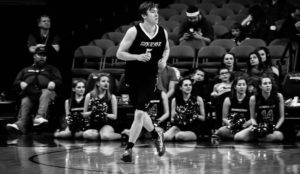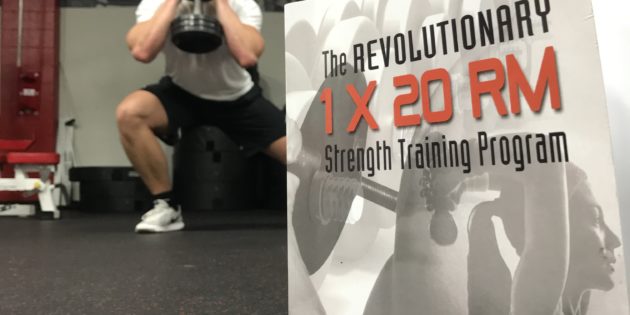My key points from “The Revolutionary 1 x 20 RM Strength Training Program” by Dr. Michael Yessis:
1. The 1×20 Method is effective for youth or beginner athletes.
- The body adapts more readily to lower intensity strength exercises (greater growth and development of the muscles, joints, and support structures without fatigue and chance of injury).
- For beginners, doing one set will bring the same gains as doing two or more sets. One set is more than adequate to sufficiently deplete energy supplies (and produce supercomensation).
- Because the last few repetitions in the routine are high-intensity, they are effective in developing greater strength. The earlier repetitions (approximately 11-15) favor the development of muscular endurance (as they are low-intensity).
2. Muscles do not get proportionately stronger in each type of contraction (from playing sport) because they do not experience overload (it is approximately the same in each game or practice), yet overload is a prerequisite for gains in any type of strength.
3. Criteria for specialized strength exercises (as they relate to a sports specific skill):
- Must duplicate the sports movement (same neuromuscular pathway)
- Must utilize the same range of motion (ROM)
- Must be the same type of muscular contraction
- Example: Knee Drive Exercise: same neuromuscular pathway as running, develops strength in same ROM as running, and is executed in an explosive manner as seen in running.
4. “The lighter the implement you have to move and the shorter the distance, the more your starting strength becomes important. The heavier the resistance and the longer the distance, the more important your explosive strength becomes.”
 5. “Increased strength can increase running speed. If you gain too much strength, speed will decrease. It is a Catch-22 situation. You need strength for increases in speed but too much with strength will decrease speed.”
5. “Increased strength can increase running speed. If you gain too much strength, speed will decrease. It is a Catch-22 situation. You need strength for increases in speed but too much with strength will decrease speed.”
6. “With high-intensity training, you can only manage about 6 exercises. With 1 x 20, you can usually do more than 20 different exercises. It takes over 20 exercises to cover all the major joints and joint action in the body.”
7. “Most injuries have a neuromuscular base. How the exercises are executed plays the most important role in injury prevention.”
8. 1 x 20 causes greater blood flow which leads to:
- Increased capillary density (more efficient waste product removal from working muscle)
- Greater growth (strength and thickness) of ligaments and tendons
9. Yessis’s findings on exercise and transfer to sport:
- The good morning and back raise exercise are usually needed before undertaking the squat for most participants.
- Along with the heel (calf) raise exercise, it is recommended that you also do dorsiflexion, ankle abduction, and ankle adduction if your sport requires running and cutting actions.
- When you have correct running technique and do this exercise (Band Paw Back), the chances of injury to the hamstrings are greatly minimized, if not completely eliminated.
- The Back Raise with a Twist is especially important in sports such as golf in which a backswing is taken.. Generation of most rotational power requires separation of the hips and shoulders.

- For full abdominal muscle development, you need the 45 degree Sit Up, Reverse Sit Up, and the Reverse Trunk Twist.
- The best exercise for shoulder rotation in throwing and hitting is the Russian Twist.
- The three most important exercises for improving running speed: knee drive, paw back, and heel raise.
10. “The quicker you gain strength the faster you will lose it. The slower you gain strength the longer you will keep it.”
Click here to get a copy of The 1 x 20 Method version1.2.


I ended the basketball season at around 175 lbs. and am now back up to 190 lbs. while feeling the same in terms of explosiveness on the court. Strength wise, at the end of the season I was benching 70kg for reps and am now (after Hypertrophy Clusters) benching 80kg for reps. I’m also back to squatting 140kg for reps after struggling to squat 120kg for reps during the season.
Chris T. - Collegiate Basketball Player
PURCHASE HYPERTROPHY CLUSTER PROTOCOL HERE



